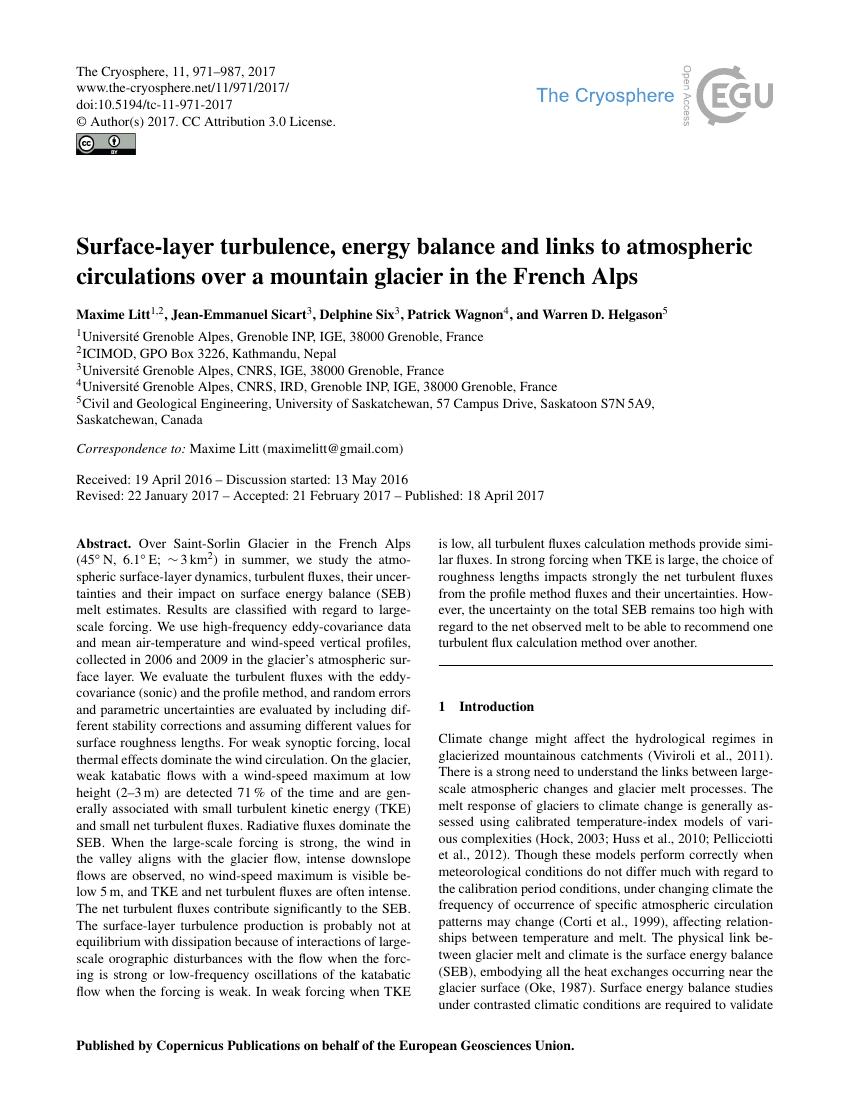Over Saint-Sorlin Glacier in the French Alps (45° N, 6.1° E; ∼ 3 km2) in summer, we study the atmospheric surface-layer dynamics, turbulent fluxes, their uncertainties and their impact on surface energy balance (SEB) melt estimates. Results are classified with regard to large-scale forcing. We use high-frequency eddy-covariance data and mean air-temperature and wind-speed vertical profiles, collected in 2006 and 2009 in the glacier's atmospheric surface layer. We evaluate the turbulent fluxes with the eddy-covariance (sonic) and the profile method, and random errors and parametric uncertainties are evaluated by including different stability corrections and assuming different values for surface roughness lengths. For weak synoptic forcing, local thermal effects dominate the wind circulation. On the glacier, weak katabatic flows with a wind-speed maximum at low height (2–3 m) are detected 71 % of the time and are generally associated with small turbulent kinetic energy (TKE) and small net turbulent fluxes. Radiative fluxes dominate the SEB. When the large-scale forcing is strong, the wind in the valley aligns with the glacier flow, intense downslope flows are observed, no wind-speed maximum is visible below 5 m, and TKE and net turbulent fluxes are often intense. The net turbulent fluxes contribute significantly to the SEB. The surface-layer turbulence production is probably not at equilibrium with dissipation because of interactions of large-scale orographic disturbances with the flow when the forcing is strong or low-frequency oscillations of the katabatic flow when the forcing is weak. In weak forcing when TKE is low, all turbulent fluxes calculation methods provide similar fluxes. In strong forcing when TKE is large, the choice of roughness lengths impacts strongly the net turbulent fluxes from the profile method fluxes and their uncertainties. However, the uncertainty on the total SEB remains too high with regard to the net observed melt to be able to recommend one turbulent flux calculation method over another.
